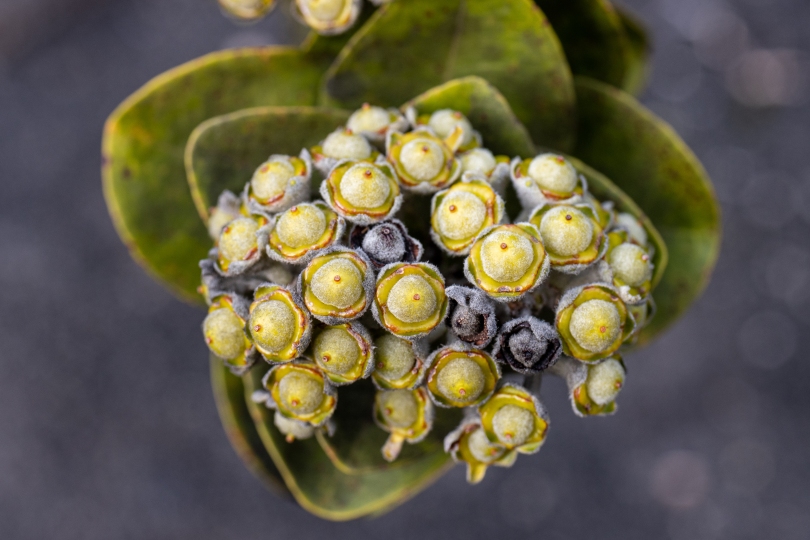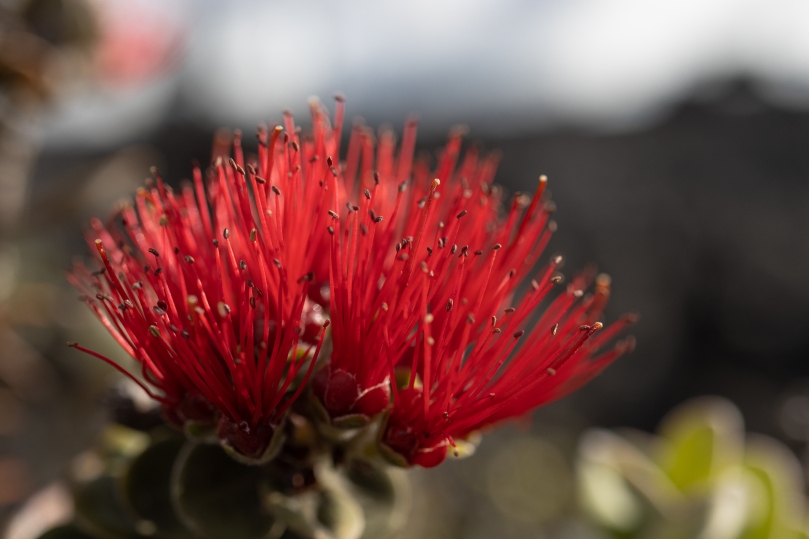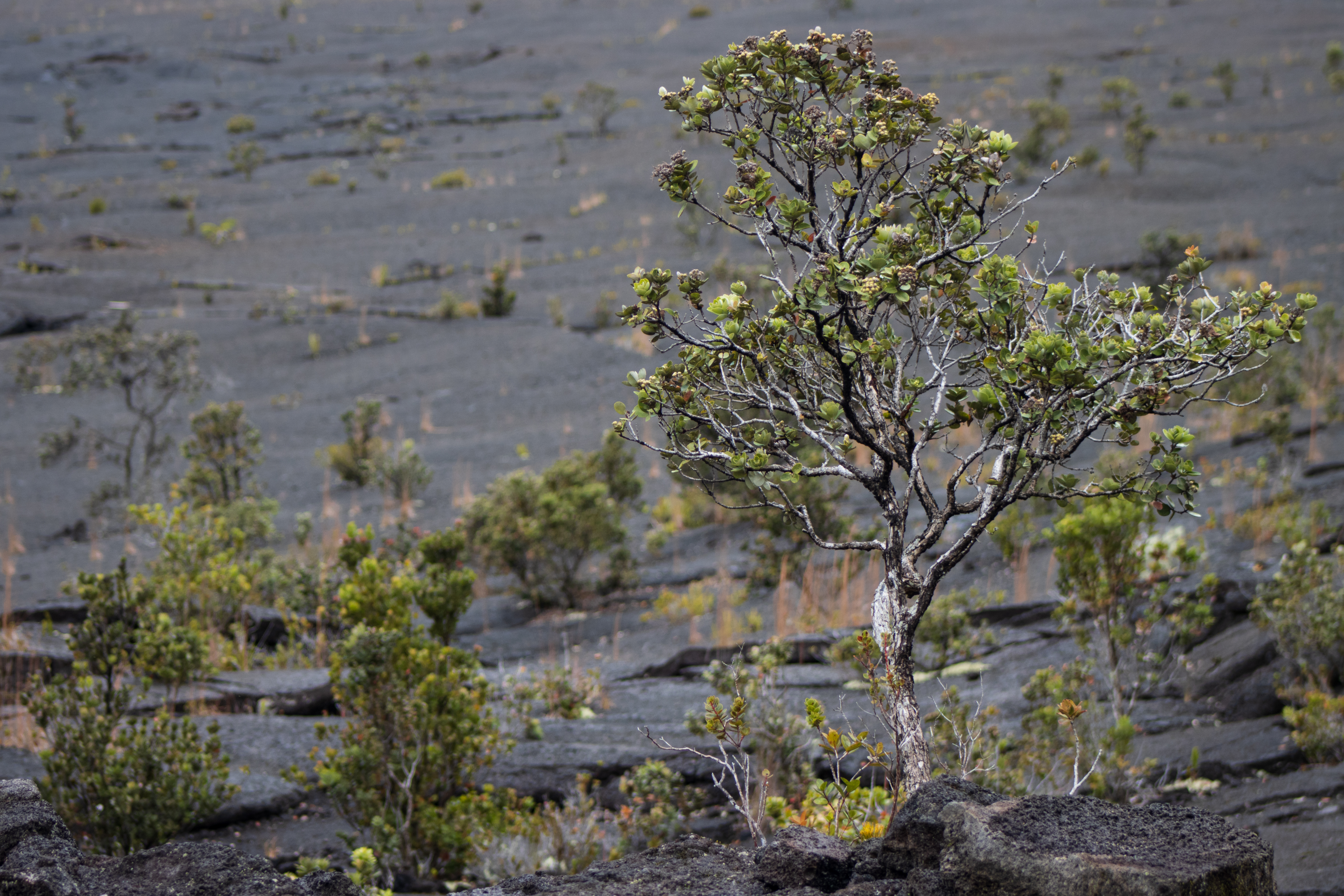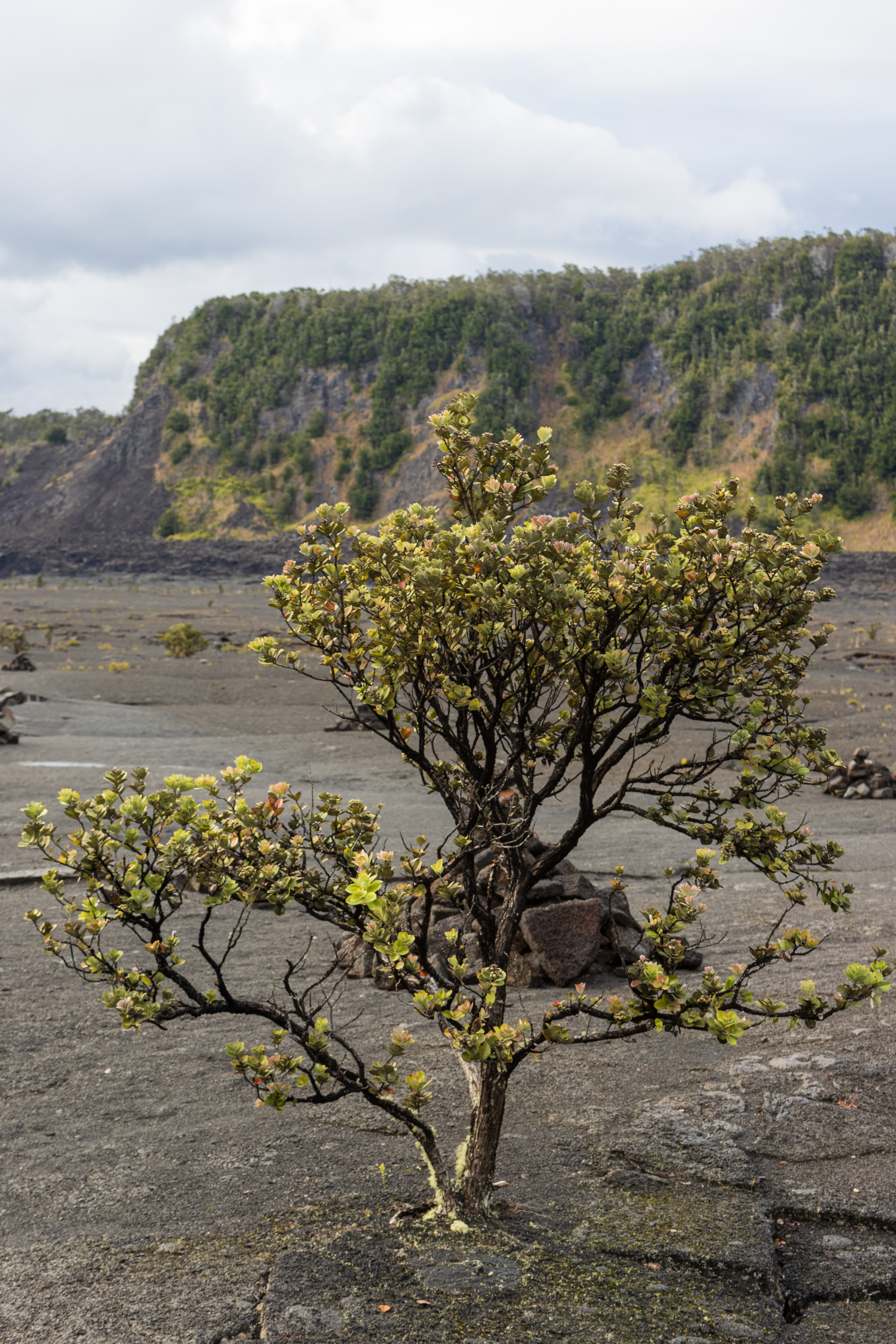Search for native Hawaii plants to look for, and undoubtedly the name of ‘Ohi’a lehua will show up on the list. This charismatic plant is the most common native tree found in Hawaii. It is an evergreen, highly variable tree found on the six major islands. Its flowers are showy and come in various colors ranging from yellow to red, red being the most common variation. Flowers are produced as inflorescence made up of a mass of long stamens. Ohia lehua forests are essential habitats for various native birds as it is one of the few Hawaiian plants capable of producing nectar. They host both native and introduced birds. To the right is a ʻApapane (top) and a Japanese white-eye bird move around a vast ‘Ohi’a tree.
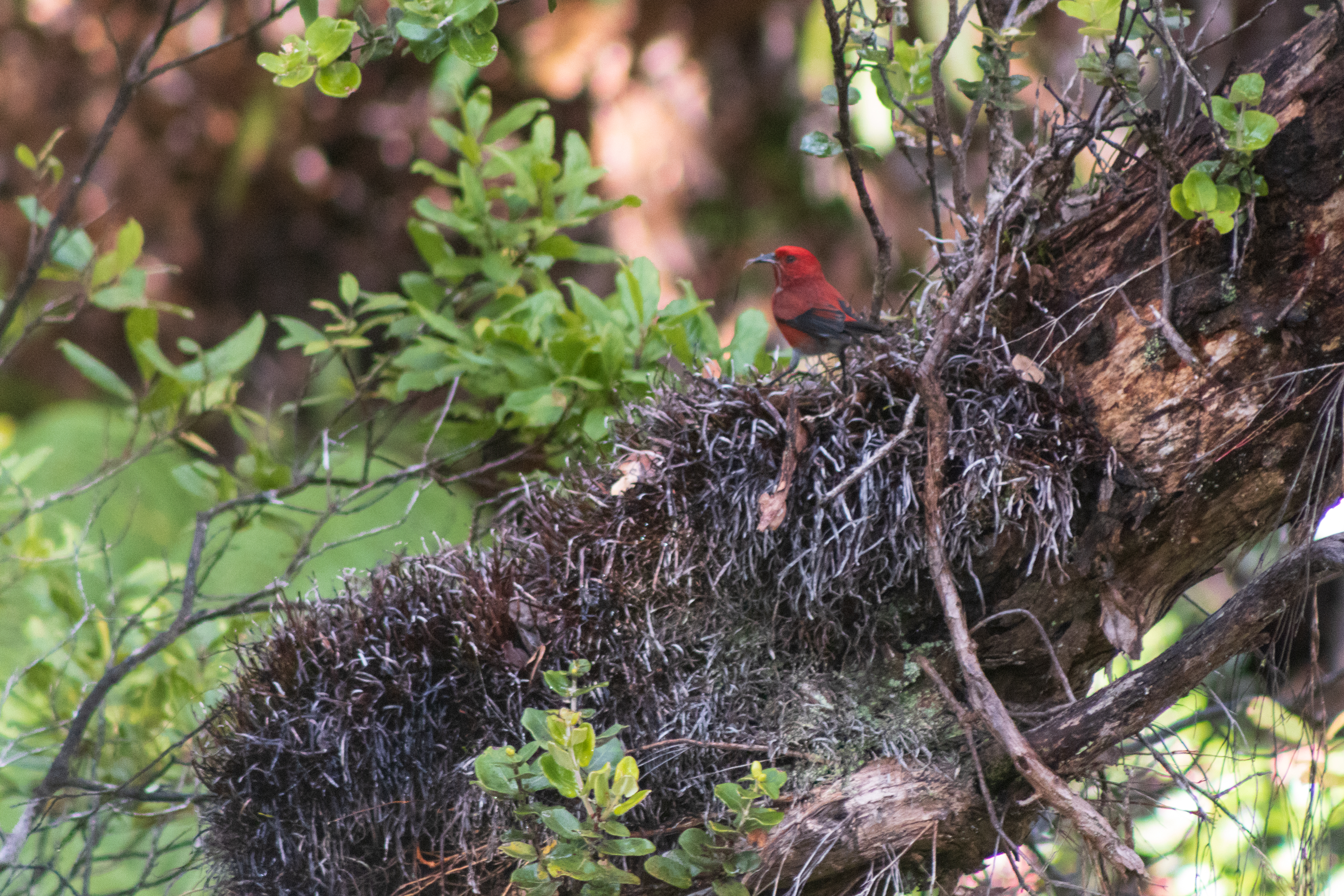
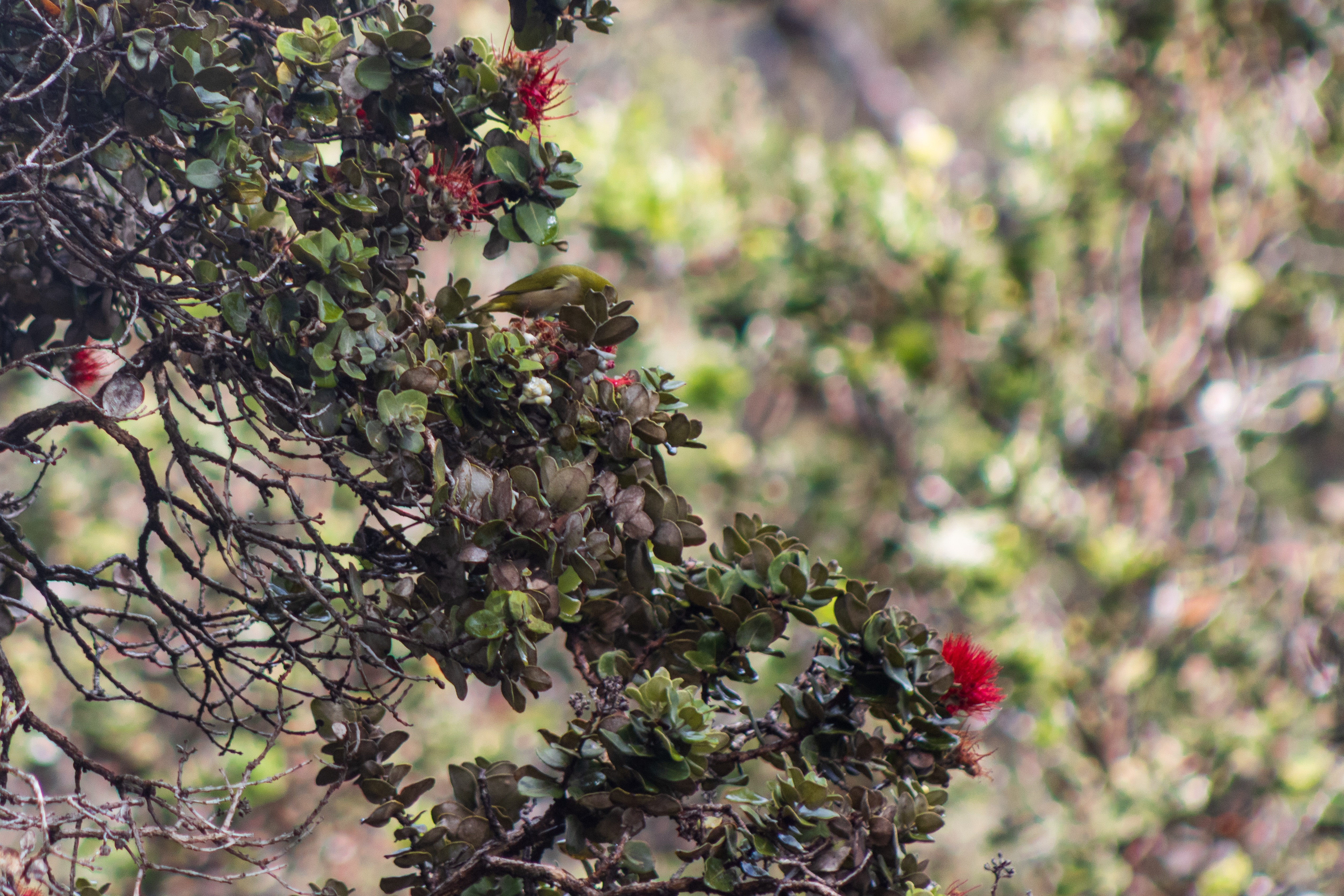
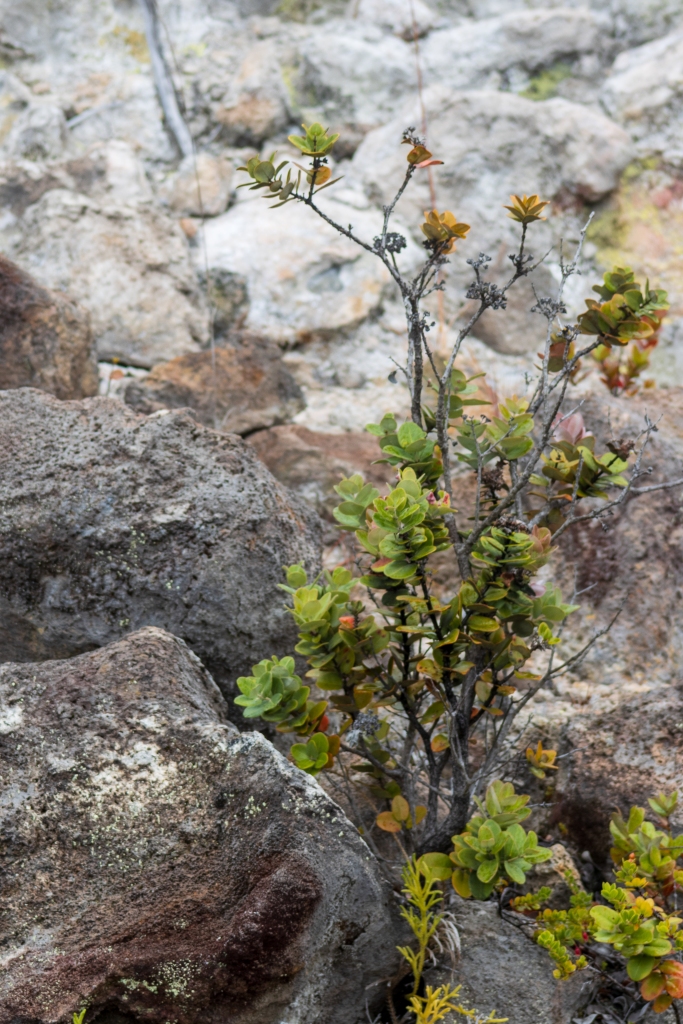
The Ohia lehua is a crucial early colonizing species that grows straight out of basalt. It is among the first trees that are growing on recent lava flows. It is even tolerant of extreme sulfur content found along sulfur banks on the big island. A sign along the trail mentions the severe conditions on the banks and the possibility of the ‘Ohi’a colony evolving into a distinct subspecies over generations.
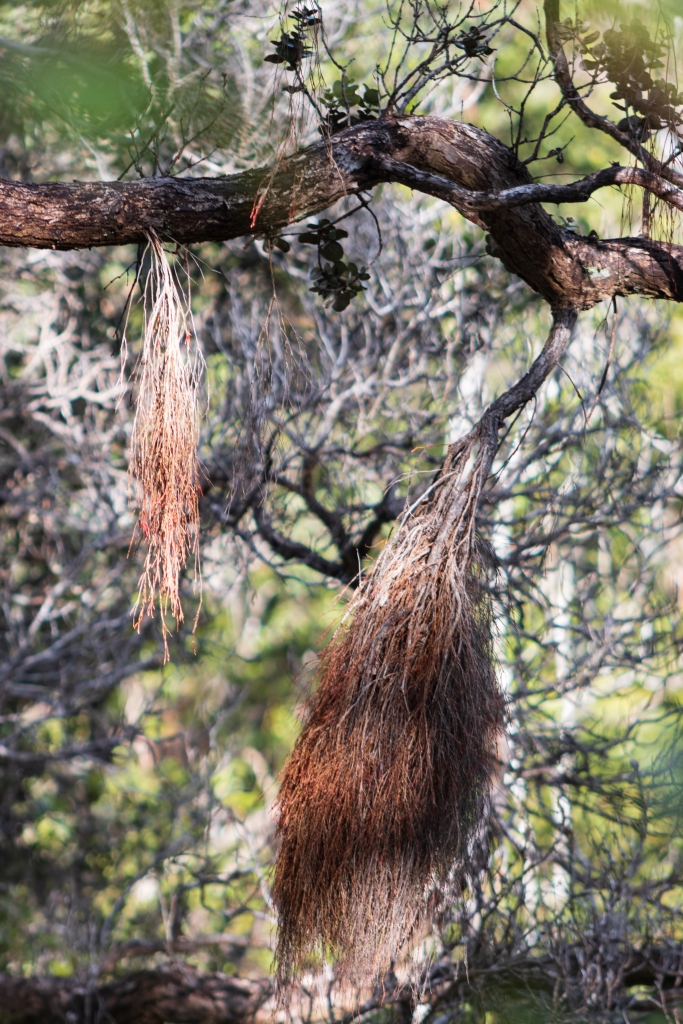
Its tolerance to various growing media leads to extreme tree size variations. In favorable soil, in rainforests, it can grow to be more than 80 feet tall, while when growing in boggy ground or on freshly cooled igneous rocks, it grows as a small prostrate shrub. In wetter conditions, Ohia branches drop down aerial roots that stay suspended and absorb moisture from the air. Shown here is an enormous specimen of Ohia lehua.
Current preservation efforts for the ‘Ohi’a have faced various issues, including the curse of introduced species like ornamental/livestock feed grasses that quickly take over ‘Ohi’a forests, climate change, and the latest fungal pandemic afflicting these plants, the rapid ‘Ohi’a death. First reported in the big island of Hawaii, mitigations efforts have been taken to help stop the spread of the fungus, including closing down of forests to visitors. Humans can carry these pathogens on their shoes as they walk through the forest floor. To avoid spreading the disease, visitors should use the shoe cleaners placed along trails. Please be mindful of your presence as an outsider when you visit these unique habitats.

